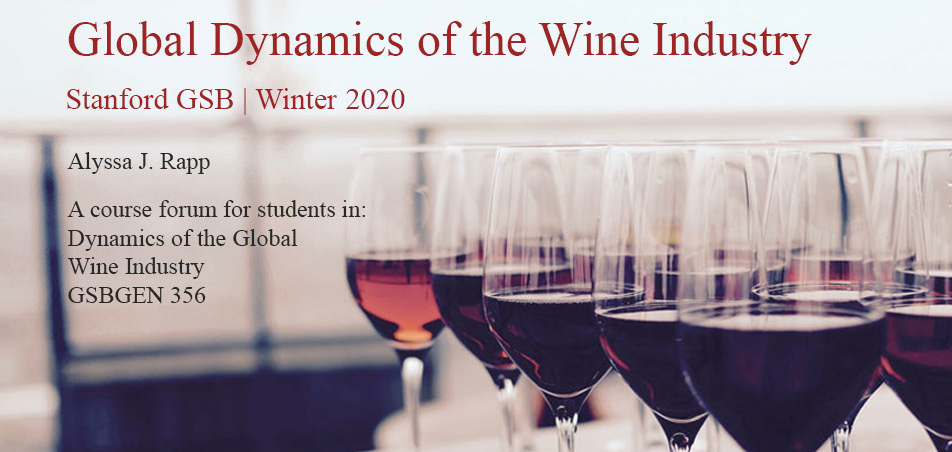We learned with remarkable depth across such a breadth of topics, strategies, and perspectives, I wanted to focus in on a few that really stood out to me via raw impact and surprise:
| Law
The first is the defining function of law. If f(x,y,z...) is the function governing a businesses' operations, one of those variables better be a nuanced understanding of the 21st amendment. This law sketches the contours of the wine industry, with every U.S. wine operator providing the color between those lines. Its passage destroyed the potential for businesses and gave others' powerful competitive advantage. How do we not have Amazon Wine? Can you even think of investing in a wine provider without core licensing in the bag? If you don't understand this, the instruments of your perspective on the wine industry are out of tune -- you're simply unprepared to answer many of the industry's most poignant questions.
| Math
Supply outstrips demand. From immediately getting cold-called in the first class to our very last day together, the charm of this fact is imbued in its counter-intuitiveness. How many industries can claim this? But the more we dug in, the more this simple fact tessellated the picture of the global wine economy. Some classes, I sat there thinking, "Well of course supply outpaces demand--so many winemakers and sellers vying for real palette estate." Others I'd think, "How come everybody doesn't want this? There are 84 million wine drinkers in the U.S. alone, plenty of colleges--at least the buck-chuck segment should be filled..." This is one of those questions that I feel leads to healthy reflection and progressively deeper understanding of the industry if one keeps asking it of him/herself over time.
| Art
My favorite class was hearing from our guest sommelier (note: "Blogger" doesn't recognize 'sommelier' - sad!). For whatever reason, the human mind seems unable to look at an expert and recognize the fact that talent isn't innate; it's brute force, studying, getting things wrong, and building a skill. It was great to peak behind the curtain to hear how his conceptual backbone and experience informs his ability to truly taste and appreciate different wines (and countries, regions and cultures in turn). His matrix "tastes-like" slides I'll never forget, and it honestly made me leave wanting to start yet another side hustle to delve into a subtle part of the world -- purely for the journey of it.
|
Learning
One of the most important elements of this class that I've already articulated to some is the pace. This class
moved. We didn't waste time, and if you didn't show up, you'd feel completely out of place (let alone look stupid).
That comes from a mutual trust from teaching and students to buy all the way in, but it also comes through execution. There was an expectation that everyone not only had "done the reading", but had informed takes on it, had found the logical gaps, explored alternatives and was looking to share their value-add.
To make this environment a reality in one's own life, take expectations and situate them within a given class/workplace as premises, have a vision for what's important, and reward contribution. This course created genuine intellectual excitement, and I love being reminded of what that looks like.
